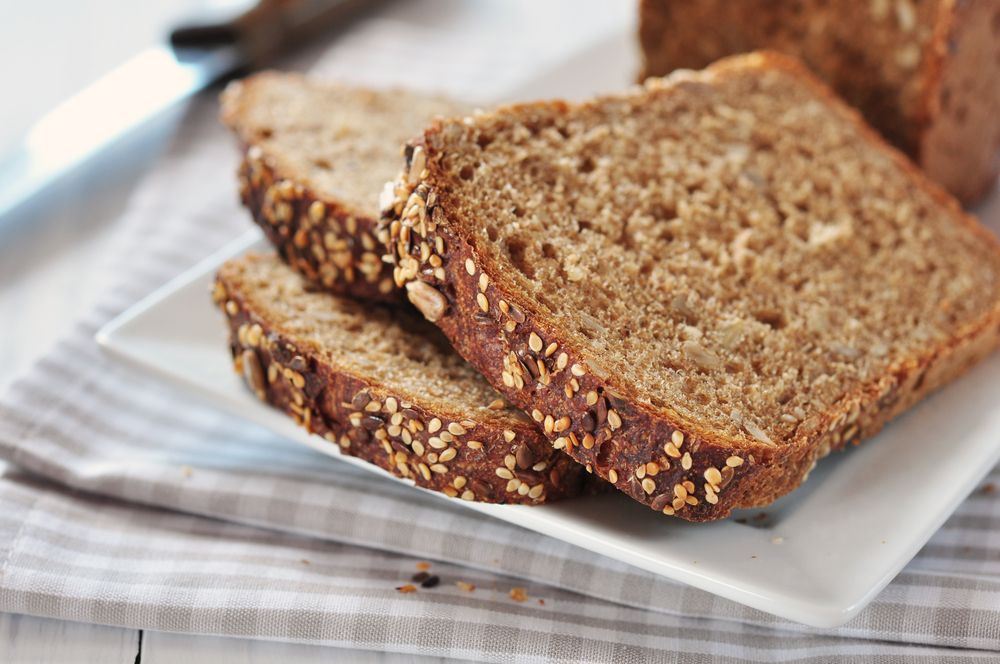Whole wheat bread often gets a bad rap, but as a registered dietitian, I believe it's been unfairly judged. Carbohydrates, which are essential for energy, are abundant in bread. While a meal consisting solely of plain white bread may not be ideal, incorporating bread into a well-rounded meal alongside sufficient protein and healthy fats can contribute to a balanced diet. For those seeking optimal nutritional benefits without compromising taste, I highly recommend opting for 100% whole wheat bread.
Whether toasted for breakfast, used for sandwiches, or as breadcrumbs in recipes, whole wheat bread offers valuable nutrition and can enhance satiety after meals compared to its white counterpart. Despite its numerous advantages, it's important to note that whole wheat bread may not be suitable for everyone, particularly individuals with celiac disease or a wheat allergy.
Curious about the potential upsides and downsides of incorporating whole wheat bread into your diet? Keep reading to uncover the details.
1) You'll Increase Your Fiber Intake

A single slice of 100% whole wheat bread typically contains 2 to 4 grams of fiber, depending on its size. For adults, aiming for 14 grams of fiber per 1,000 calories consumed—or 28 grams on a 2,000-calorie diet—is recommended. Incorporating fiber into your diet is linked to various health benefits, including enhanced digestion, improved gut health, heart health, and lower cancer risk.
Unfortunately, the average adult in the United States consumes only about 8 grams of fiber per 1,000 calories, falling significantly short of the recommended intake. By including just two slices of whole wheat bread in your daily meals, you can boost your fiber intake and meet over 25% of your daily fiber needs.
2) You'll Feel Full

Whole wheat bread encompasses the entire wheat grain, including the bran, germ, and endosperm. In contrast, refined grains like white bread undergo processing that strips away these nutritious components, along with much of the fiber. Being a complex carbohydrate, whole wheat takes longer for your body to digest compared to white bread. This slower digestion process contributes to a prolonged feeling of fullness after consumption.
3) You Could Lose Weight

Replacing refined grains with whole wheat bread may aid in weight loss or management. Research suggests that consuming whole grains is associated with a lower body mass index (BMI) and reduced risk of weight gain. Data from observational studies indicates that incorporating whole grains into your diet can enhance feelings of fullness and satiety, potentially reducing overall calorie intake.
Moreover, evidence from long-term cohort studies spanning from 5 to 20 years consistently demonstrates this inverse relationship. Individuals consuming higher quantities of whole grains tend to experience less weight gain compared to those with lower whole-grain intakes.
4) Your Cholesterol Could Improve

Incorporating whole grains such as whole wheat into your diet can positively impact cholesterol levels, lowering the risk of heart disease. Whole wheat bread works to regulate cholesterol production in the liver and restricts the digestion and absorption of dietary cholesterol.
A small-scale study revealed promising results, showing that consuming the equivalent of four slices of whole wheat bread daily for 12 weeks led to significant improvements in triglyceride levels, total cholesterol, LDL-cholesterol, HDL-cholesterol, and hemoglobin A1C. Conversely, there were no notable changes observed in the control group.
5) Your Blood Sugar May Improve

Contrary to common misconceptions, individuals with diabetes can incorporate bread into their diet, with whole wheat bread potentially offering advantages for blood sugar management. While whole-grain bread can still cause blood sugar levels to rise (as it contains carbohydrates), its fiber content slows down digestion, resulting in a gradual release of sugar into the bloodstream.
Moreover, consuming whole wheat bread might even serve as a protective measure against the development of type 2 diabetes later in life. Several cohort studies, involving nearly 200,000 adults without type 2 diabetes at the outset, revealed that individuals with the highest intake of whole grains had a 29% lower risk of developing type 2 diabetes compared to those with the lowest intake.
6) You'll Lower Your Risk Of Cancer

Consuming refined grains in high amounts is linked to an elevated risk of colorectal and gastric cancers, but incorporating whole grains into your diet may offer protection against these cancers. Numerous studies have demonstrated lower incidence rates of colorectal, gastric, breast, pancreatic, prostate, and esophageal cancers among individuals with higher whole grain consumption compared to those with lower intake.
Furthermore, the magnitude of this association is notable. Research indicates that individuals with the highest whole grain intake have a 27% lower risk of stomach cancer compared to those with the lowest intake.
7) Your Digestion Could Improve

Whole wheat bread and other whole grains are rich in insoluble fiber, which plays a crucial role in digestive health. This type of fiber increases stool bulk and promotes faster movement of waste through the digestive tract. Additionally, whole-grain wheat exhibits a prebiotic effect, meaning it nourishes beneficial gut bacteria. As these bacteria ferment the fibers from whole wheat bread, they produce essential fatty acids that support a healthy gut microbiome and aid in digestion.
8) You Might Have An Allergic Reaction

Genuine wheat allergies are uncommon, impacting only about 1% of children in the United States, with a majority outgrowing this allergy by adulthood. However, if someone with a wheat allergy consumes whole wheat bread, they may encounter allergic reactions affecting the skin, respiratory system, stomach, or even experience anaphylactic shock.
Distinct from a wheat allergy, celiac disease can also trigger adverse reactions to wheat bread due to the gluten it contains. Consuming whole wheat bread may lead to symptoms ranging from diarrhea to joint pain or skin rashes in individuals with celiac disease.

